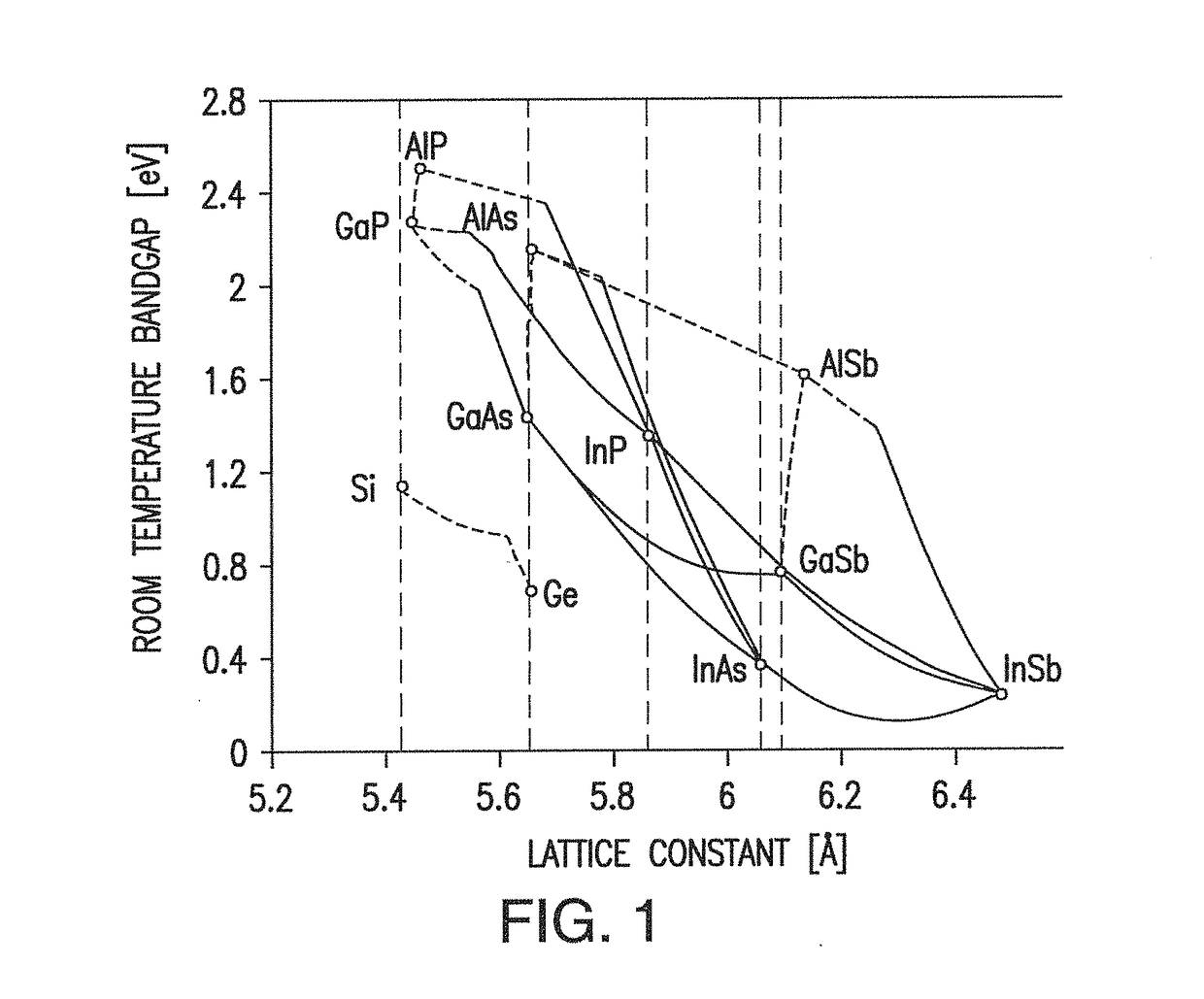Inverted metamorphic multijunction solar cell with multiple metamorphic layers
a solar cell, metamorphic technology, applied in the direction of sustainable manufacturing/processing, climate sustainability, semiconductor devices, etc., can solve the problems of increasing the number of practical difficulties relating to material selection and fabrication steps, and the manufacturing process tends to be more complex
- Summary
- Abstract
- Description
- Claims
- Application Information
AI Technical Summary
Benefits of technology
Problems solved by technology
Method used
Image
Examples
Embodiment Construction
[0120]Details of the present invention will now be described including exemplary aspects and embodiments thereof. Referring to the drawings and the following description, like reference numbers are used to identify like or functionally similar elements, and are intended to illustrate major features of exemplary embodiments in a highly simplified diagrammatic manner. Moreover, the drawings are not intended to depict every feature of the actual embodiment nor the relative dimensions of the depicted elements, and are not drawn to scale.
[0121]The basic concept of fabricating an inverted metamorphic multijunction (IMM) solar cell is to grow the subcells of the solar cell on a substrate in a “reverse” sequence. That is, the high band gap subcells (i.e. subcells with band gaps in the range of 1.8 to 2.2 eV), which would normally be the “top” subcells facing the solar radiation, are grown epitaxially on a semiconductor growth substrate, such as for example GaAs or Ge, and such subcells are ...
PUM
 Login to View More
Login to View More Abstract
Description
Claims
Application Information
 Login to View More
Login to View More - R&D
- Intellectual Property
- Life Sciences
- Materials
- Tech Scout
- Unparalleled Data Quality
- Higher Quality Content
- 60% Fewer Hallucinations
Browse by: Latest US Patents, China's latest patents, Technical Efficacy Thesaurus, Application Domain, Technology Topic, Popular Technical Reports.
© 2025 PatSnap. All rights reserved.Legal|Privacy policy|Modern Slavery Act Transparency Statement|Sitemap|About US| Contact US: help@patsnap.com



